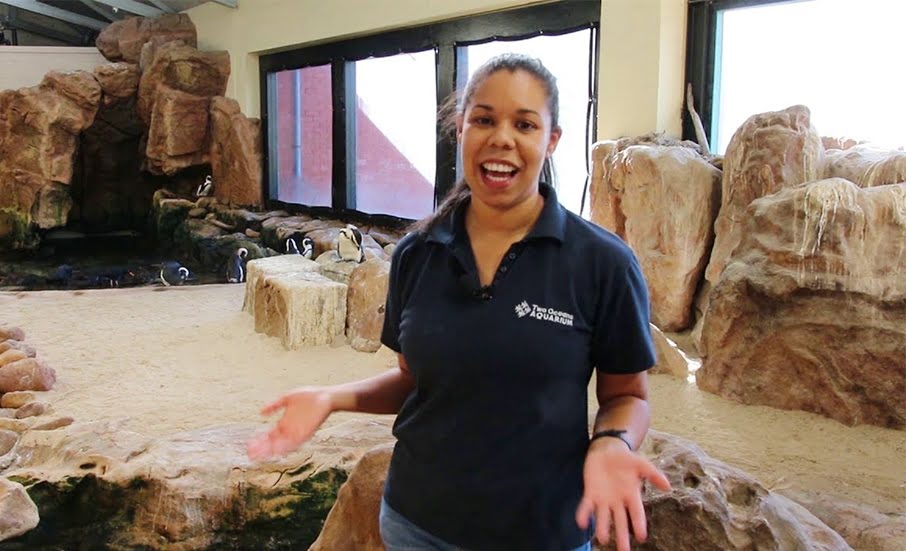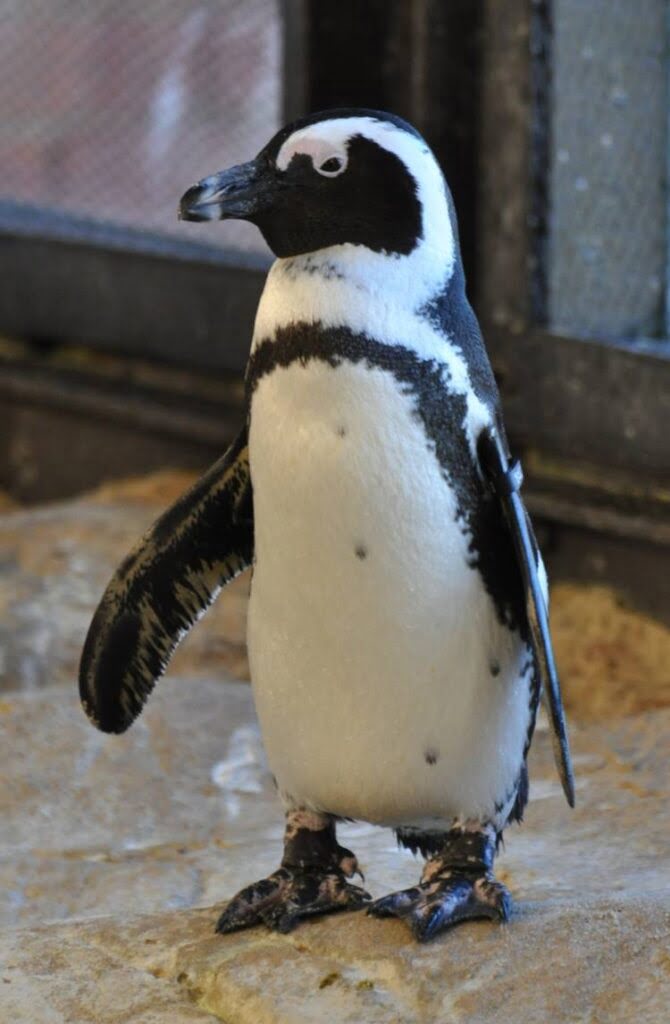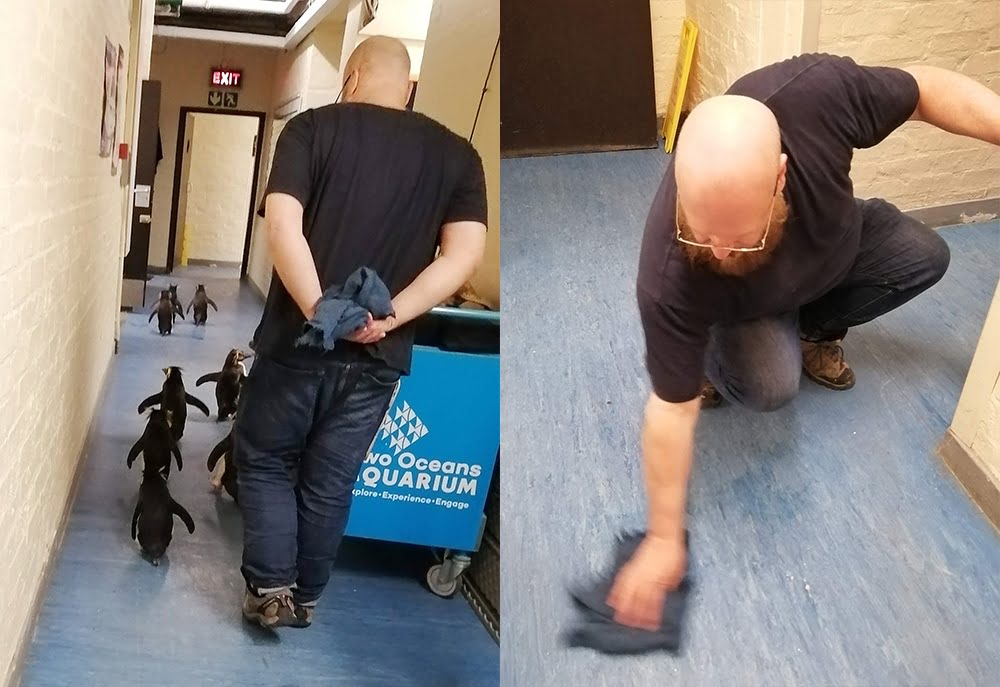On my travels, I’ve been able to spend time with penguins—both northern rockhopper penguins and African black-footed penguins. They’re adorable. They’re cute, intelligent, and often show great curiosity about everything. The African penguins are an indicator species because they respond quickly to change—which is one reason I say they are Agile. When we observe penguins changing their behavioral patterns, taking a kind of adaptive action, it’s an early indicator that tells us a broader systemic shift is occurring in the complex marine system.
There are now 40,000 species on the ICUN Red List of plant and animal species that are threatened with extinction. The Red List is published by the International Union for Conservation of Nature. That shocking count includes five endangered species of penguins—including the northern rockhopper penguins and African black-footed penguins. There are 13 more penguin species on the list that are considered threatened but not yet endangered.
Will our own species be added to the Red List? With current trends, it seems to me that the question is not if humankind joins the Red List of endangered species. The question is only when our species joins the Red List unless we adapt and learn to effectively respond to the changes we’ve created.

Meeting Some of the Endangered Penguins
Jutta Eckstein and I joined Linda Rising as speakers at the Agile MiniCon held recently on Earth Day. I also arranged for several of my friends, who are penguins, to join us live on Zoom. Since my friends don’t have hands (they’re penguins), we asked Shanet Rutgers to operate Zoom for them. That way she could also introduce us.
Shanet is the head penguin keeper at Two Oceans Aquarium in Cape Town, South Africa, and with her help, we met the resident northern rockhopper penguins, including Hopper, Nikki, Bubbles, and Harold. We also met Zuki and some other feisty and adorable African black-footed penguins.
Of course, in Cape Town, the African penguins are the locals. In the wild, they travel the South African coastal waters, nesting on beaches near Cape Town or on islands in their range extending along the coastline of South Africa and Namibia. You might recognize African penguins if you’ve seen the Netflix series Penguin Town. Several starred in the series, taking on dramatic reality television-style roles.
From the enthusiastic reactions, it appears MiniCon participants were very delighted to make friends with the penguins. I’m grateful to Shanet and the aquarium for facilitating our introductions. (If you missed it, be sure to watch the replay, not only to meet the penguins and Shanet, but also to find the inspiring and informative Earth Day content from Linda Rising, Jutta Eckstein, and me.)

Dr. Ross Wanless has been warning people through the aquarium for nearly a decade. He warns the penguins are “a sentinel, an indicator species for marine ecosystem health. If they’re in trouble, it’s indicating very clearly that things are going badly more broadly and we cannot ignore those warning signs.”
The penguins we met are fine, but the rockhoppers and African penguins in the wild are not.
The African Penguins’ breeding colonies are collapsing if they haven’t already collapsed. This is largely due to unsustainable and sometimes cruel human activity within our shared ecosystem, The African penguin colonies are largely depleted, leaving the penguins unable to reproduce in the numbers needed to sustain their colonies. This is the very sad truth: many people estimate that the last wild African penguin will be gone from the earth in the next 15 to 25 years—unless we can create the necessary change.
The penguins are very much in trouble. What are we going to do with the warning signs?
Sustainability by Agile
The penguins are warning us of problems in a wickedly complex system.
Our global marine ecosystem is connected in some way to all life on earth. Not only that, the changes that are occurring are chaotic and messy. The effect of those changes on humans and penguins and other living systems is unpredictable (though the trends are clearly toward extinction).
That might feel somewhat familiar, like a song (or an ecstatic penguin call) that you’ve heard before. Many problems in Agile Software Development are also problems of wicked complexity. We’ve been uncovering practices, principles, and methods for responding to change in complex systems related to Agile Software Development, and we’ve been helping others do it. How could we use our experience to respond to these ecosystem changes “by doing it and helping others doing it?”
According to the United Nations Brundtland Commission, sustainability means “meeting the needs of the present without compromising the ability of future generations to meet their own needs.” That must include saving our seas. It must continue to meet our needs and the needs of our penguin friends.
Sustainability by Agile (a term coined by Jutta Eckstein) is “using agile values, principles, and skills to improve sustainability … either across industries in general or to the sustainability sector, in particular” (Holyer and Eckstein). In sustainability work, this would include helping climate action groups effectively address the climate crisis.
I can’t bear to say goodbye to the African penguin. I can’t. That’s why, pairing frequently with Jutta, I’ve been seeking out ways to use my Agile experience to partner with environmental NGOs and other organizations that are actively working to effectively address climate change in a complex adaptive system. We’ve been building our skills and experience to do this. Besides volunteering at Two Oceans Aquarium, I have yet to work with an organization that is directly working to save penguins, but I know that the work I’m doing in our interconnected global system helps them too.
Holding space
If you participated in the Agile MiniCon (or watched the recap), you met the penguins at Two Oceans Aquarium along with Shanet, head penguin keeper. After I completed the required volunteer training at the aquarium (it included a fairly intensive hands-on introduction to marine biology), I had the privilege to spend several days observing Shanet and the other penguin keepers. While observing, I also helped by prepping fish for feed time and by recording what the penguins consumed for Shanet to keep with their dietary records.
I’m always impressed by seeing how deeply the aquarium staff respects the wild animals in their care. They hold space for the animals to self-organize within the constraints of animal safety. The penguins (and other animals in their care) decide for themselves when to approach humans. They decide how much they will eat (while we monitor their diets to make sure their health needs are met). And they decide whether to spend swim time flying underwater through the aquarium’s kelp garden or hanging out in their habitat.
I was able to hold this space the rockhoppers like Hopper, Harold, Bubbles, and Nikki. That taught me more about holding space for the groups and communities I facilitate, coach, and consult. I didn’t realize Shanet had taken this photo while I was holding space for the penguins to waddle to their kelp garden pool time. But as soon as she sent me this picture, I saw this is a picture of holding space for self-organization with respect for the system gathered in the room (or the hallway in this case).
If you know Open Space Technology and the art of mindfully holding space, you know picking up discarded coffee cups is part of holding space. The towel you see is for picking up the penguin’s discarded coffee cups (Pic 1).

In this case, the discarded coffee cups are fresh poop. (Pic 2)
By doing the work, I’ve learned how important it is to approach the organizations where I work in the same way I might approach a penguin, or in the way a rockhopper might approach me. I approach organizations curiously as a partner, ready to hold space for their work.
My work with Open Space Technology is one of the main things helping me enter the system as a partner rather than an invasive species (something definitely unwelcome in conservation circles). Like rehabbers and rewilders, I enter these systems prepared to hold the space for what they need. While this is essential to Agile coaching, I also find it can be all too easy to invade space destructively by acting the part of the superior expert. That’s disrespectful.
Practices
In doing this work, Jutta and I are finding we have many practices and methods at our fingertips for sustainability by Agile. Sometimes the learning curve has been steep, but the positive outcomes are worth the climb.
We’ve found that some well-known Agile practices and approaches have been helpful to us, especially liftoff and continuous Agile chartering, participative leadership and decision-making, and empirical planning. Other approaches like Human Systems Dynamics with the practice of Adaptive Action have helped us help others address climate change. Finally, in our experience, Open Space Technology almost always offers the most effective and powerful approach to working with groups for sustainability by Agile.
Next month, at the XP2022 conference in Copenhagen, Jutta and I will present our experience report about working with a well-known organization of climate activists. You will be able to find our report here on Agile Alliance after the conference.
Kinship
Kinship was the theme running throughout the Earth Day Agile MiniCon. Linda spoke about the kinship of trees. Through the work of people like Suzanne Simmard, we’ve learned about the mother trees and kinship in the forest. Linda also described how she found a connection, even a kinship, with trees.
Jutta spoke passionately about kinship in describing her ongoing work for a sustainable future—both in Agile and by Agile. I shared about a real kinship I’ve come to know with endangered penguins. I developed that kinship through a kind of cross-species friendship with some very special birds.
The novelist Richard Powers, known for his fictionalized novel about the mother tree, wrote, “Kinship is the recognition of shared fate.”
We do share the fate of life on planet earth, whether we recognize it or not.
What do you love enough to save?
You’ve met my penguin friends from Two Oceans Aquarium. That means they are your friends too. Or perhaps your connections lie in a different direction. Even if you haven’t recognized our shared fate, I want to invite you to join us in finding ways to work for the needs of today and for the future. If you are working on sustainability in Agile or sustainability by Agile, we want to continue the conversation with you. Please reach out, and please share what you’re learning.
These last words are not mine. These are the words from P. Dee Boersma’s conclusion to a research paper on penguins as marine sentinels. Boersma asks their question perfectly. How will we find the answers?
“[C]hanges in penguin populations reflect rapid changes in the marine environment and show that people are doing a poor job of managing the oceans. We are changing the world, the course of evolution, and the species with which we share the planet. Can people change to allow other species to persist and coexist? That is the real question: can we, and will we, manage ourselves.”
Are the answers Agile?
(Header/Featured image source: Gerhard Van Deventer – Venture Photography)









